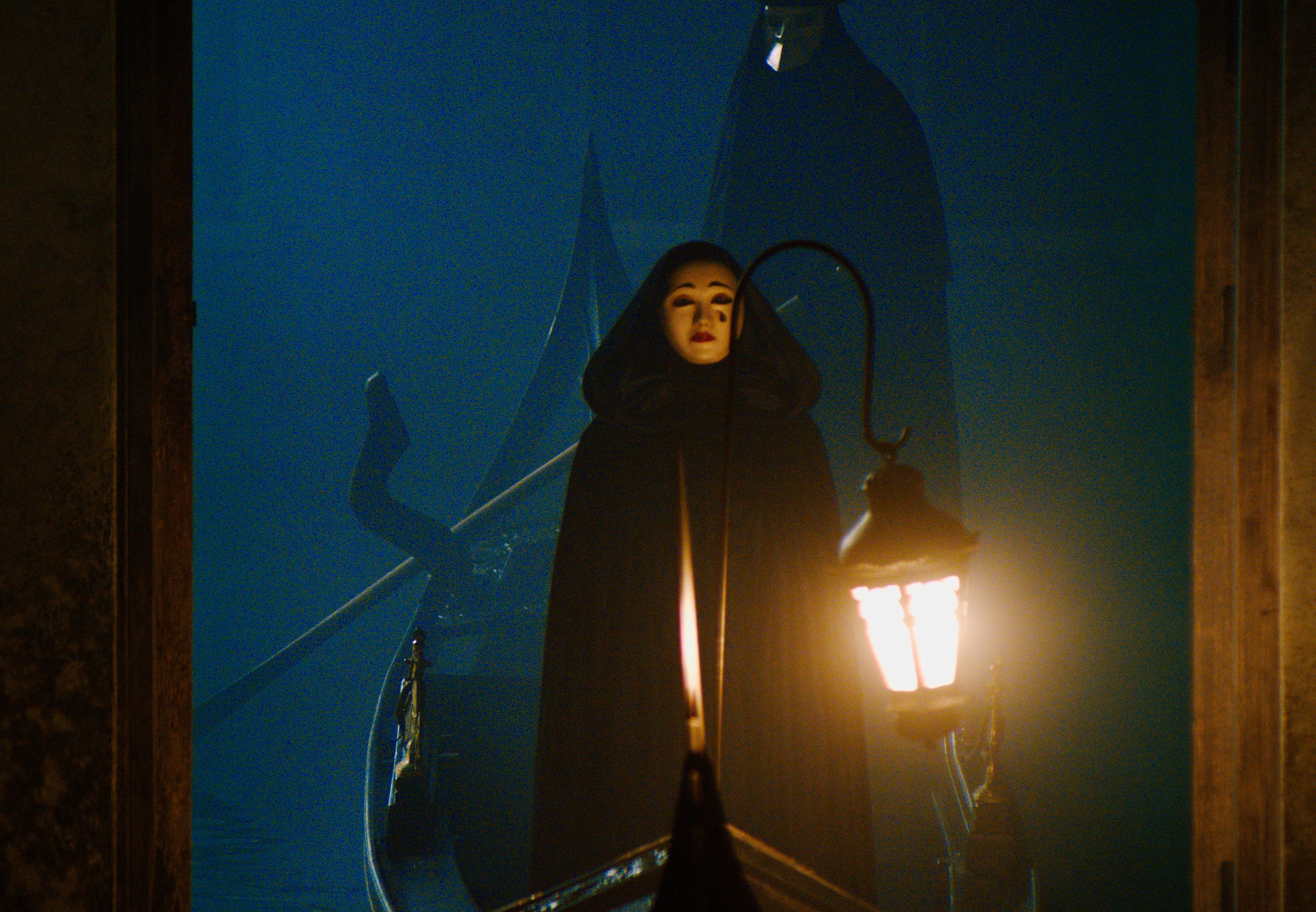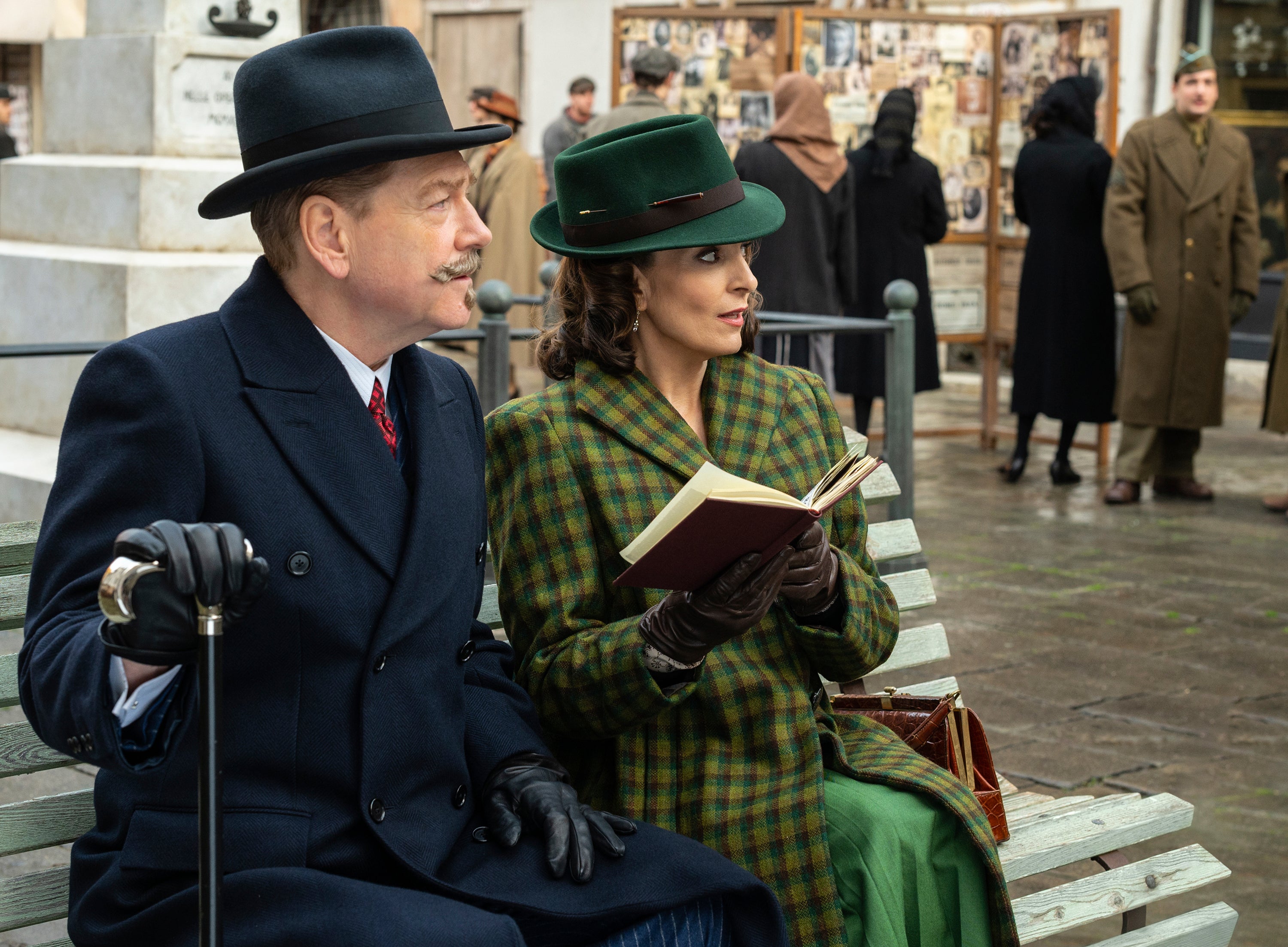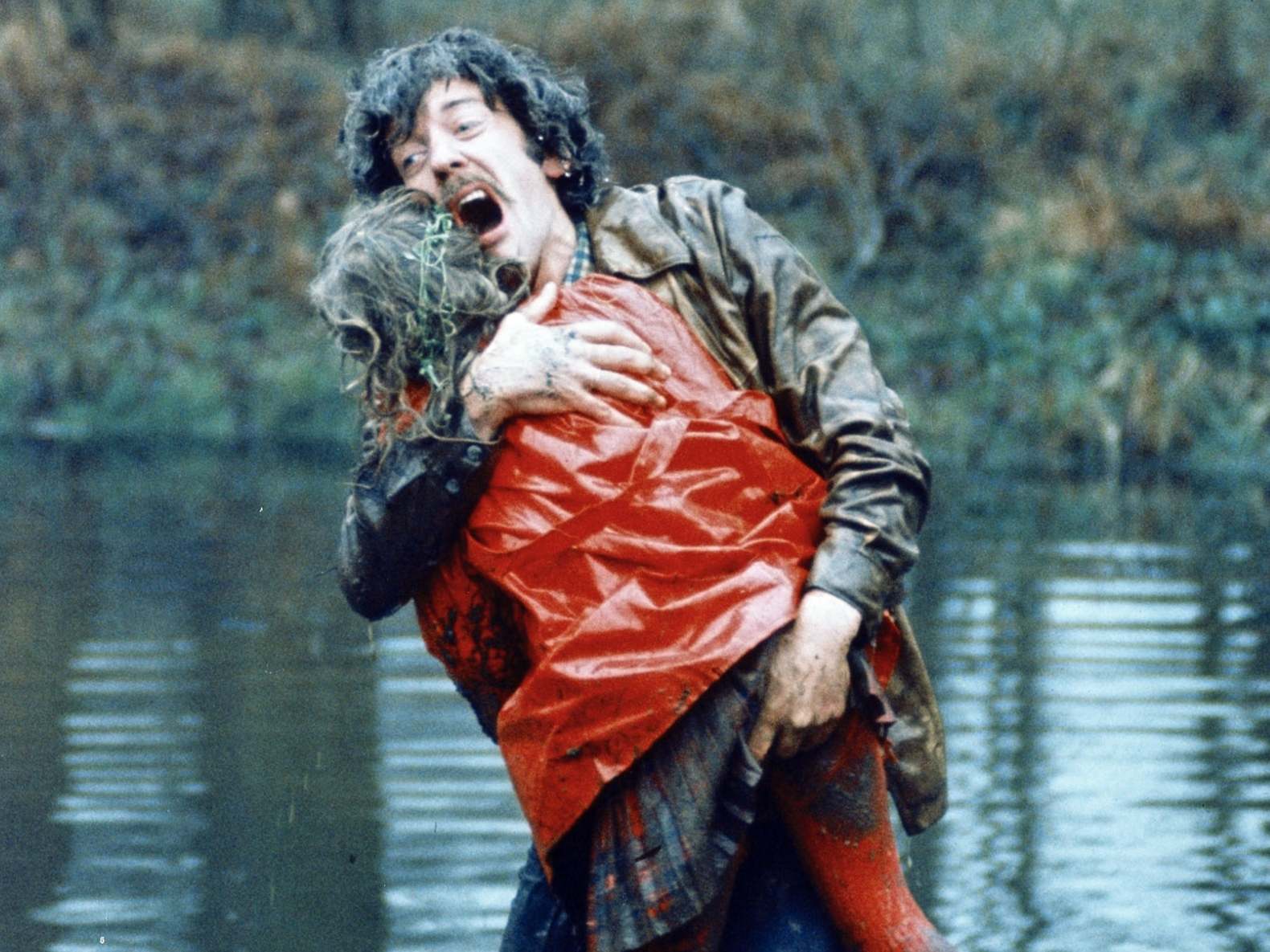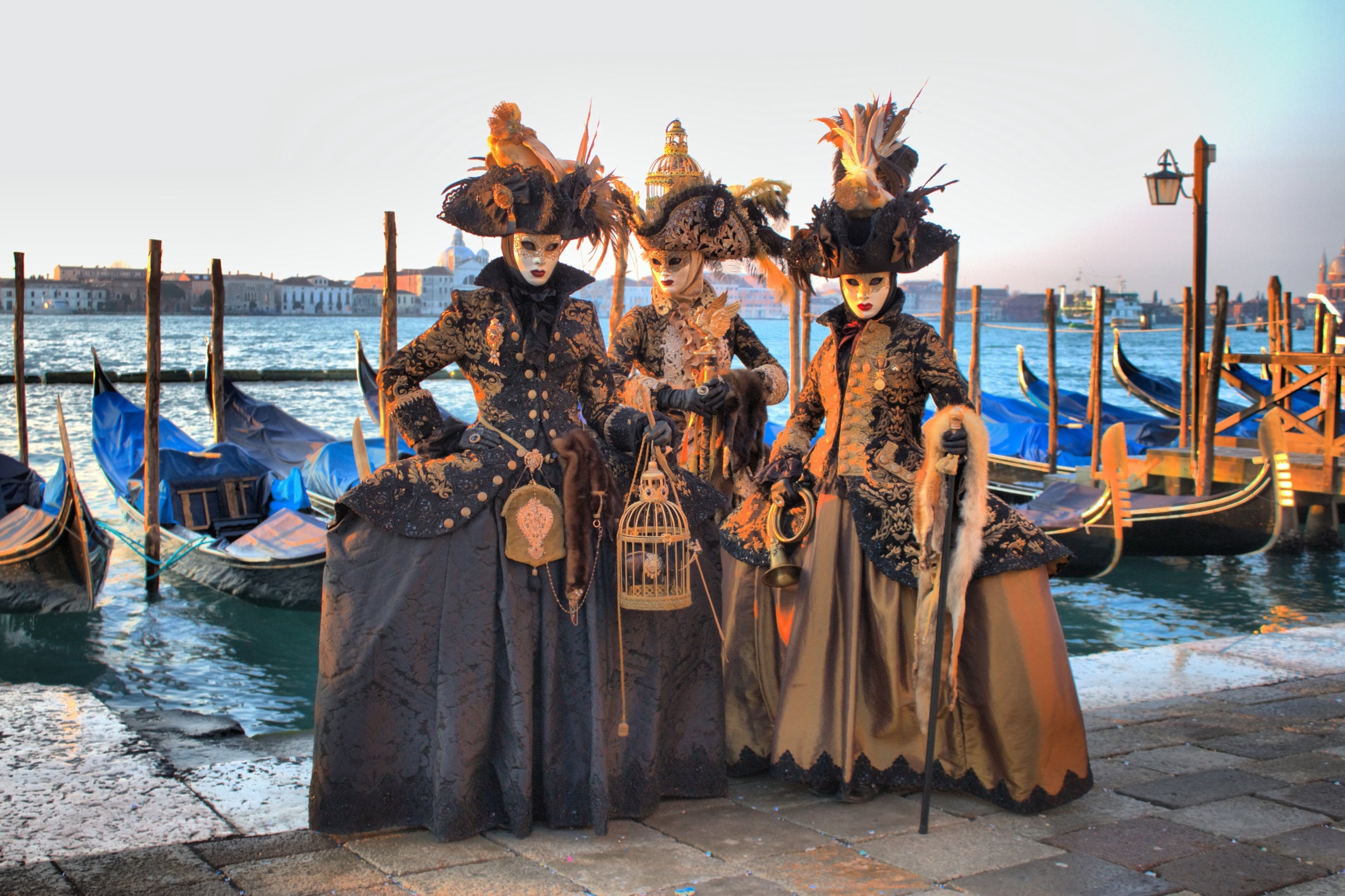How Venice, the city of love, became cinema shorthand for dread and despair
La Serenissima of the big screen is rife with gothic mystery, decadence and secret streets, says Ruth Bushi. As A Haunting in Venice hits cinemas, here’s how to experience it for yourself

If a film plot involves a trip to Venice, watch out: its characters are in for a rough ride. Contrary to its popular image as the city of love and canals, Venice in the movies is code for sex, death or disaster. Horror classic Don’t Look Now famously ticks all these boxes, but from James Bond to Indiana Jones, even blockbusters succumb to the city’s sinister charms. In Venice, heroes face their demons, lose love or are cruelly betrayed; villains, meanwhile, merely make the most of its dark side.
It’s fitting that a city famous for its masks should have two faces. Film studies lecturer Des O’Rawe says cinema portrays Venice as both a utopia of romantic possibility and its exact opposite – a world of decadence and decay.
Even the third film in Kenneth Branagh’s rebooted Hercule Poirot franchise prefers the gothic mystery of A Haunting in Venice to the rural England of Agatha Christie’s original story, Hallowe’en Party. Venice has a depth that other cities don’t. O’Rawe calls it “a world where appearances – like the reflections that dance on its canals and waterways – are deceptive”.

You don’t have to search too hard to find this Venice of the silver screen, though; there are familiar film locations on almost every corner. These aren’t just beautiful backdrops but intrinsic to the stories that unfold on screen. There’s no more fitting location for a submerged villa in Daniel Craig’s first Bond outing, Casino Royale, than a sinking city, and 1973’s occult thriller Don’t Look Now wouldn’t exist without La Serenissima’s maze-like streets.
Unchanged for centuries, the labyrinth remains in the city’s tightly knit sotoporteghi, the alleys that run beneath and between houses. It’s beneath the arches of Calle de la Fenice (Rio de la Verona) that Don’t Look Now’s blind psychic declares Venice: “A city in aspic, left over from a dinner party, and all the guests are dead and gone.” For cinema, that’s exactly the appeal.
Mission: Impossible – Dead Reckoning Part One puts a fresh spin on the city’s familiar geography with its claustrophobic alley brawl. Calle Varisco, a 15-minute walk from St Mark’s Square, gives a sense of that scene: this is Venice’s narrowest street, at a mere 53cm wide. In the film, the fight segues into tragedy on Ponte dei Conzafelzi, in the shadow of Palazzo Tetta. The palace is one of the few surrounded by water on three sides, like a Venetian version of New York’s Flatiron building. It’s an iconic view in its own right, and one you might also recognise from Don’t Look Now.

It used to be inevitable that an action movie filmed in Venice would have a boat chase: they pop up everywhere from Indiana Jones and the Last Crusade to The Tourist. Moonraker, the 11th James Bond film, also favoured a canal shootout, but by Casino Royale it was the streets themselves that served the thrills. Craig’s Bond trails duplicitous lover Vesper Lynd on foot through the back alleys from St Mark’s Square to the Conservatory of Music Benedetto Marcello. It acts as the exterior of the film’s sinking villa but, with a hint of homage, is also the location of Moonraker’s bio weapons lab.
One of the most potent symbols of the city’s subversive side is Venice Carnival (3–13 February 2024), famous for its masked revellers and elaborate costumes. Carnevale, as its known locally, is the last feast before Lent, and traditionally a festival of gluttony and mischief-making. Hence the masks.
It may be chilly, but this is when the city comes to life with free costume parades, shows and street parties. The Ballo del Doge, the most lavish of the masked balls, adds acrobats, open bar and full period costume to the mix, and accordingly doesn’t come cheap: tickets start at €800 (£690).
Some Carnival masks seem to whisper the city’s history without words
In cinema, Carnival can evoke the city’s sinister allure without filming here at all. Stanley Kubrick’s final film, Eyes Wide Shut, transplants the spirit of Carnival to New York instead, via the secretive world of masked orgies. Many stores claim to have supplied the film’s exquisite, hand-crafted masks, but the workshop of master craftsman Franco Cecamore has the receipts. Browse the delights, catch a demo or decorate your own mask at Atelier Kartaruga, Calle Bande.
Some Carnival masks seem to whisper the city’s history without words, none more so than the iconic long-beaked plague mask. When bubonic plague swept Europe in the middle ages, Venice was quick to establish quarantine stations on the islands of Lazzaretto Vecchio and Lazaretto Nuovo. Inbound ships also dropped anchor here for 40 days of isolation (hence “quarantine”, from the Italian word for 40, quaranta).
The system was ruthlessly effective: the islands’ mass graves and burial sites reportedly held thousands of plague victims between them.

And the city’s plague history is another macabre theme that’s been reflected in film. In 2016’s Inferno, Robert Langdon (Tom Hanks) races to stop a deadly pandemic, only to be betrayed in the crypt beneath St Mark’s Basilica. In Death in Venice, ageing composer Gustav von Aschenbach (Dirk Bogarde) fixates on a teenage boy while sickness stalks the city.
Lazzaretto Nuovo is open from March to November for guided visits. Tickets cost €10 and can be booked by email. The former plague island of Poveglia is off limits to the public, though tales of a haunted asylum continue to draw a new generation of renegade filmmakers on YouTube.
“With imagination and a good cinematographer, anywhere can be transformed into a ‘transgressive location’,” Des O’Rawe says, “but Venice remains an essential point of reference.” Whether it’s love you seek or the heart of darkness, this Italian icon holds the key.
Where to stay
Palazzo Lion Morosini
Although the incredible sinking villa at the end of Casino Royale was a studio replica, this is the scene’s true location on the Grand Canal. “The marble stair and the terrace that you see in the scene is actually on our facade,” the hotel tells me.
The Gritti Palace
You might recognise the hotel’s stunning vista of Grand Canal and the Basilica of Santa Maria della Salute from Mission: Impossible 7. A balcony scene in The Talented Mr Ripley was filmed a few doors down, though any adjacent hotel or restaurant will have a view to die for.






Join our commenting forum
Join thought-provoking conversations, follow other Independent readers and see their replies
Comments